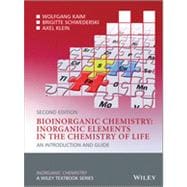The field of Bioinorganic Chemistry has grown significantly in recent years; now one of the major sub-disciplines of Inorganic Chemistry, it has also pervaded other areas of the life sciences due to its highly interdisciplinary nature.
Bioinorganic Chemistry: Inorganic Elements in the Chemistry of Life, Second Edition provides a detailed introduction to the role of inorganic elements in biology, taking a systematic element-by-element approach to the topic. The second edition of this classic text has been fully revised and updated to include new structure information, emerging developments in the field, and an increased focus on medical applications of inorganic compounds. New topics have been added including materials aspects of bioinorganic chemistry, elemental cycles, bioorganometallic chemistry, medical imaging and therapeutic advances.
Topics covered include:
- Metals at the center of photosynthesis
- Uptake, transport, and storage of essential elements
- Catalysis through hemoproteins
- Biological functions of molybdenum, tungsten, vanadium and chromium
- Function and transport of alkaline and alkaline earth metal cations
- Biomineralization
- Biological functions of the non-metallic inorganic elements
- Bioinorganic chemistry of toxic metals
- Biochemical behavior of radionuclides and medical imaging using inorganic compounds
- Chemotherapy involving non-essential elements









